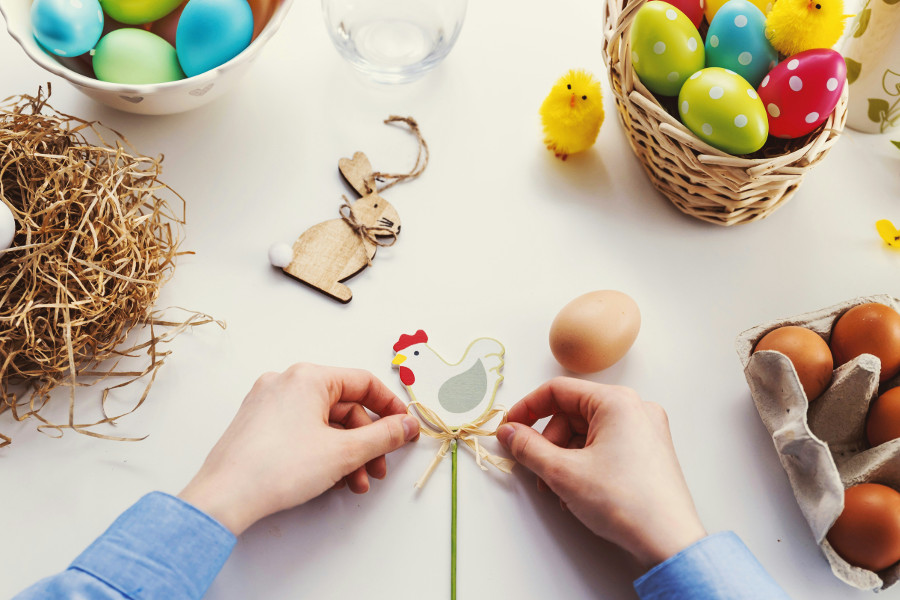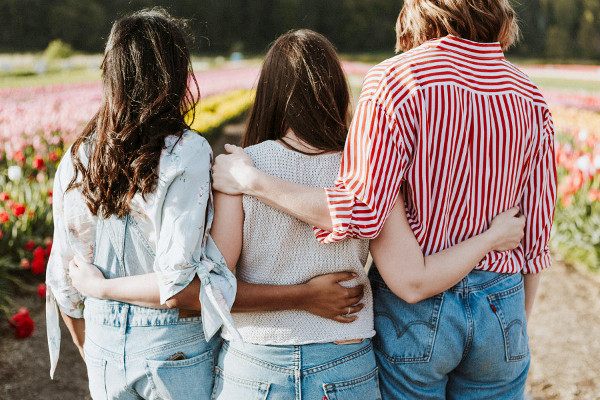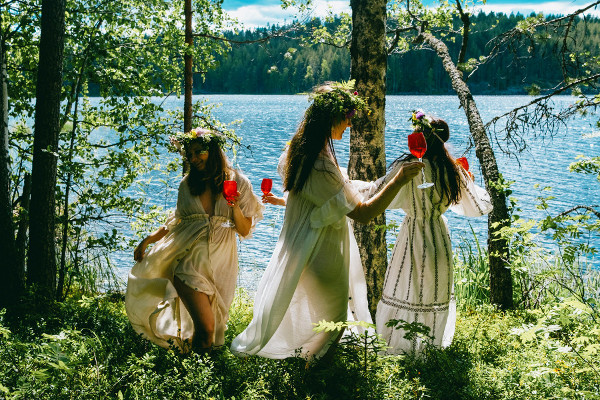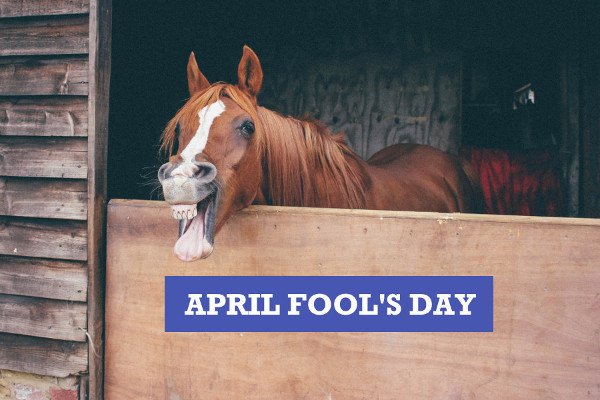How to Celebrate Easter with the Family and Have the Most Fun? - Traditions, Activities, Food and Decoration Ideas
Easter is originally a religious holiday celebrating life and renewal. It also coincides with rebirth in nature, when flowers come to full bloom and cold wheather gives way to Spring. Easter is a time to embrace new beginnings, connect with loved ones, and celebrate with them. It marks the end of Lent, a period of fasting and reflection, and invites families to gather in joyous traditions such as festive meals and Easter egg hunts.

What is Easter?
Easter is one of the most important holidays for Christians celebrating the resurrection of Jesus Christ. It marks the end of a period of fasting and reflection known as Lent. But Easter is much more than a religious holiday; it’s also a time for renewal, hope, and joy. People come together with family and friends, participating in various customs such as Easter egg hunts, and festive meals. It’s a day to celebrate new beginnings, a fresh start after the sorrow of Good Friday, and to embrace the promise of new life. Easter is heavily connected to Spring in the Northern Hemisphere and the date of this holiday often falls on days when there are already flowers blooming, birdsong coming from the trees and a milder wheather for outdoor activities.
Why does the date of Easter change every year?
Easter’s date is tied to the lunar calendar, not the regular one. It falls on the first Sunday after the first full moon following the vernal equinox (around March 21). Because the moon’s cycles are not consistent with the standard calendar, Easter can fall anywhere between March 22 and April 25. This method was established in the 4th century to keep Easter connected to both the spring equinox and the Jewish celebration of Passover. It’s a little complicated, but it helps keep Easter aligned with both nature and religious traditions.
What are some common Easter traditions?
Easter is a blend of religious and cultural traditions that span the globe. Many people attend church services to honor Jesus’ resurrection, but that’s just the start. Easter egg hunts are a favorite activity, with kids searching for hidden eggs filled with candy or small prizes. You might also see families coming together for big meals, often featuring dishes like ham or lamb. People exchange chocolate eggs, decorate their homes with spring flowers, and some even wear their best clothes, like new dresses or hats. It’s all about celebrating life and community.
What is the Easter Bunny and where did it come from?
The Easter Bunny has become an iconic symbol of Easter, bringing joy and excitement to children. It’s said to deliver eggs, candy, and small treats during Easter. The bunny's origins lie in ancient fertility symbols, as rabbits are known for their high reproduction rates. The custom likely began in Germany, where children would create nests for the bunny to fill with eggs. German immigrants brought the tradition to America in the 1700s, and it gradually grew into the Easter Bunny we know today, hiding eggs and spreading cheer.
What is the meaning behind Easter eggs?
Easter eggs symbolize new life and resurrection. Eggs have long been a symbol of fertility, and during Lent, many Christians would abstain from eating them, saving them to eat on Easter Sunday. The egg represents Jesus’ resurrection, with its shell symbolizing the tomb and the cracking of the shell signifying the emergence of new life. Over time, decorating eggs became a tradition, with red eggs being particularly significant, symbolizing the blood of Christ. Today, the practice has evolved into a fun activity where eggs are dyed in vibrant colors and hidden for children to find.
What is Good Friday and how is it related to Easter?
Good Friday is a solemn day in the Christian calendar, marking the crucifixion and death of Jesus Christ. It falls two days before Easter, and it’s a day of mourning and reflection. Christians believe that Jesus' sacrifice on the cross was essential for humanity’s salvation. The day commemorates the immense suffering he endured, which leads directly into the joy of Easter Sunday, when his resurrection is celebrated.
What are some traditional Easter foods around the world?
Food plays a central role in Easter celebrations worldwide. In the U.S., ham is a traditional dish, often served with sides like potatoes and vegetables. In Greece, Easter lamb is popular, accompanied by rich, savory breads. Italians enjoy dishes like "Colomba di Pasqua," a dove-shaped cake, while Polish people feast on "żurek," a sour rye soup. In the UK, hot cross buns are a must-have, and many countries exchange or enjoy chocolate eggs. These foods often have deep symbolic meanings, celebrating rebirth and the joy of the season in their own unique ways.
How do different countries celebrate Easter?
Easter is celebrated differently around the world, with unique traditions and customs reflecting each culture’s history and values. In Spain, elaborate processions are held, where people walk the streets in somber reflection. In Greece, Easter is celebrated with midnight church services, feasts, and red-dyed eggs. In Italy, large family gatherings feature rich foods like lamb and special Easter cakes. In the U.S., Easter egg hunts and family brunches are the norm, and in Sweden, children dress as "Easter witches," going door to door for treats. Each country adds its special touch to this joyous occasion.
What is the history behind Easter egg decorating?
Decorating Easter eggs is an ancient tradition that dates back to the early Christians. Eggs, as symbols of life and fertility, have long been used in spring celebrations, but it was during medieval times that Christians began using eggs to symbolize the resurrection of Jesus. The practice of decorating eggs evolved over the centuries. Today, egg decorating is a fun and creative part of Easter, with people using dyes, paints, and various techniques to make vibrant, intricate designs. Decorating eggs is a good family activity that you can pursue together with your kids.
How do you organize an Easter egg hunt?
Organizing an Easter egg hunt is all about fun, excitement, and a little creativity. First, choose a location, whether it’s a backyard or a park. Gather plastic eggs and fill them with small candies or trinkets, or use hard-boiled eggs decorated with vibrant colors. Hide the eggs in a variety of spots, making sure to vary the difficulty level for different ages. Provide baskets or bags for the kids to collect their eggs. Set a time limit or give out prizes for the most eggs found. The goal is to create an engaging and joyful experience for everyone involved.
Why do we eat ham for Easter dinner?
Eating ham for Easter dinner is a tradition with historical roots. During medieval times, pigs were slaughtered in the fall and cured for preservation. By the time Easter came around, the ham was ready to be eaten. Additionally, ham marked the end of the Lenten fast, when many Christians would abstain from meat. The large size of ham also made it perfect for serving family and friends. Today, ham continues to be the centerpiece of many Easter meals, representing both tradition and the joy of feasting after a period of fasting and reflection.
How do you make traditional Easter foods?
Making traditional Easter foods is a celebration of family, culture, and tradition. For example, to prepare Easter lamb, season a leg of lamb with garlic, rosemary, and olive oil, then roast it to perfection. For sweet breads, such as hot cross buns or Easter bread, you’ll need flour, sugar, butter, eggs, and yeast. After mixing the ingredients, let the dough rise, then bake until golden. Some recipes also include spices like cinnamon or nutmeg for added flavor. Each dish is carefully crafted to celebrate the season and bring people together for a joyful feast.
How do you plan an Easter brunch?
Planning an Easter brunch is all about creating a festive, welcoming atmosphere. Start by offering a variety of dishes to cater to different tastes. Classic options include scrambled eggs, quiches, pancakes, and fruit salads. For baked goods, consider hot cross buns, cinnamon rolls, or muffins. Add a touch of elegance with a mimosa bar or fresh juices, and make sure there’s coffee and tea available. Don’t forget to decorate the table with pastel-colored linens, fresh flowers, and Easter-themed centerpieces to make the occasion feel special. The goal is a relaxed, celebratory gathering for all.
How do you decorate your home for Easter?
Decorating your home for Easter is all about embracing the colors and symbols of spring. Think pastel shades like pink, lavender, and yellow for tablecloths, cushions, and flowers. Display Easter eggs in bowls or baskets, and add touches of greenery and fresh blooms, like lilies or tulips. Hang a festive wreath on the door, and place bunnies or eggs around the house for a playful touch. For a personal touch, create your own DIY centerpieces, using decorated eggs or candles. It’s all about setting a joyful, welcoming mood that celebrates the season’s beauty and renewal.
What are easter markets and where can I visit them?
Easter markets are festive outdoor markets held during the weeks leading up to Easter, typically in European cities. They feature a wide array of handcrafted goods, including Easter decorations, wooden crafts, candles, and intricate painted eggs. Visitors can also enjoy traditional Easter foods, sweets, and drinks. These markets are particularly popular in countries like Germany, Austria, and the Czech Republic. Cities such as Vienna, Munich, and Prague host some of the most charming Easter markets, offering a lively atmosphere with performances, workshops, and a glimpse into local Easter traditions.



